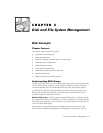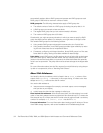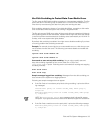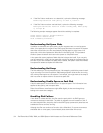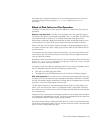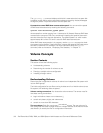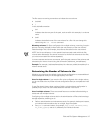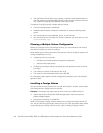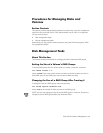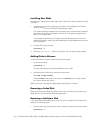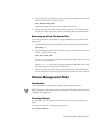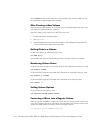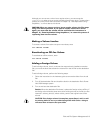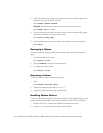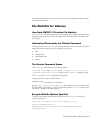
3-8 Dell PowerVault 720N, 740N, and 760N System Administrator and Command Reference Guide
Take individual volumes off-line, for example, to perform administrative tasks on
their file systems or associated RAID groups, while the other volumes remain on-
line, without interrupting the availability of the data on them.
Limitations of configuring with multiple volumes include
The filers storage space is partitioned.
Additional administrative overhead is introduced, for example, defining export
points.
You can expand but not concatenate, shrink, or split volumes.
You cannot perform a local copy of a volumes contents; you must use
dump
and
restore
or
ndmp copy
.
3ODQQLQJD0XOWLSOH9ROXPH&RQILJXUDWLRQ
Before you configure a filer with multiple volumes, you must decide on the number
and sizes of volumes you want to configure.
When deciding the number and sizes of volumes you want to configure, keep the fol-
lowing considerations in mind:
Configuring with more volumes
provides more flexible quota and snapshot configuration
requires more export points
Configuring with larger volumes increases the time needed to restore a volume
from tape.
The maximum number of volumes per filer is 23.
The maximum
recommended
volume size is 250 GB.
For instructions about specific volume configuration procedures, see Volume Man-
agement Tasks.
,QVWDOOLQJD)RUHLJQ9ROXPH
You can remove an entire volume from one filer and install it in another, which makes
the moved volume a
foreign
volume to the filer.
Example: For example, you might want to move a volume to a different filer to
replace the volumes PowerVault 700N storage system with one that has a
greater storage capacity
gain access to the files on a dead filer
When a filer detects a foreign volume at boot time, it places the foreign volume off-
line. You can then bring the foreign volume on-line. For more information about install-
ing and bringing up a foreign volume on-line, refer to Adding a Foreign Volume.




